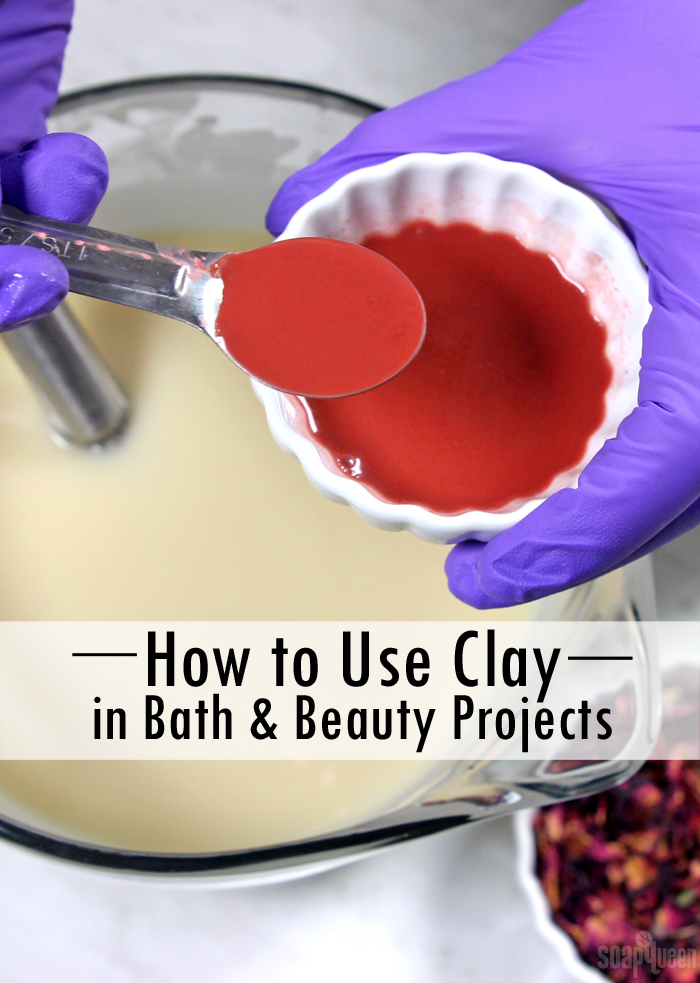Clay is a versatile ingredient for a wide variety of bath and beauty projects. It’s probably most well known for clay face masks, but can also be used in cold process soap and scrubs. It adds color and various oil absorbing properties. If you’d like to add clay to your homemade beauty projects, find out which clay is right for your skin. Then, learn how to add it to various projects below.
Clay in Cold Process Soap
Because of their ability to absorb liquid, including oil, clays are a popular additive for soap created for oily skin. If you’d like to add clay to your soap projects, keep those properties in mind; clay also absorbs moisture in soap. To compensate for the moisture clay absorbs, disperse it in distilled water (rather than oil) for cold process soap recipes. The usage rate is 1 tablespoon distilled water per teaspoon of clay. In general, a usage rate of about 1 teaspoon of clay per pound of soap is a great place to start for cold process soap recipes. Feel free to use more if you’d like, just keep in mind clays also speed up trace. The more you use, the faster your soap will become thick. Learn more about trace here. Check out the recipes below for inspiration.
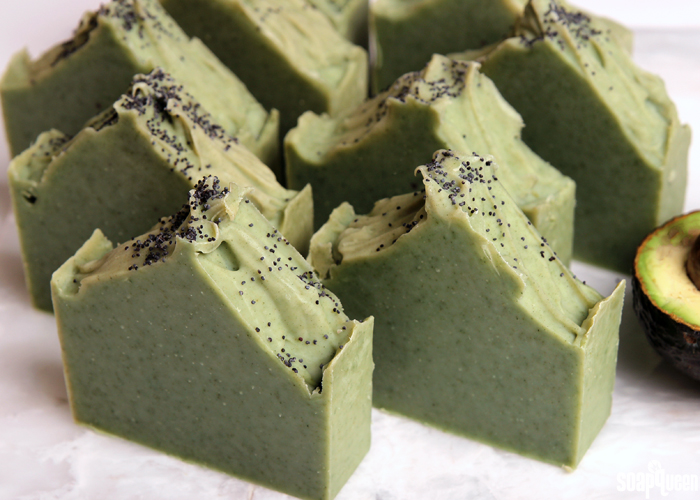 The French green clay used in the Avocado + Spearmint Cold Process Soap helps give it a soft green color.
The French green clay used in the Avocado + Spearmint Cold Process Soap helps give it a soft green color.
Clay in Melt and Pour
Clays are great for melt and pour soap as well. To help avoid clumps, disperse the clay in 99% isopropyl alcohol at a rate of 1 tablespoon alcohol to 1 teaspoon clay. They give soap great color and absorption properties. Unlike cold process soap, you don’t need to worry about it thickening the “trace” of melt and pour, but don’t use too much. Adding too much clay to melt and pour soap can make it more difficult to work with. One teaspoon of clay per pound of melt and pour soap is a great place to start. Continue adding clay to the melt and pour until you reach your desired effect.
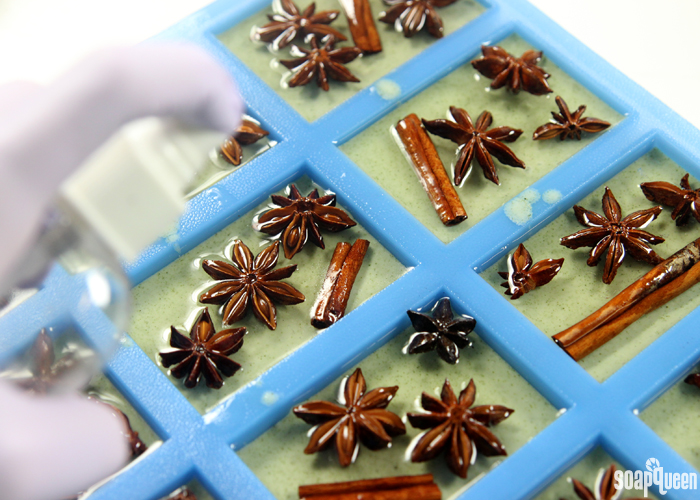 A combination of spirulina powder and green zeolite clay create a soft green color in the Star Anise Melt & Pour Bars.
A combination of spirulina powder and green zeolite clay create a soft green color in the Star Anise Melt & Pour Bars.
Clay in Scrubs
Clays make a wonderful addition to body and face scrubs. This is especially true if the scrub is designed for oily skin, as clays pull oil from the skin. Because clays are fine grained, they usually don’t add much exfoliation to scrubs. But, they are fantastic additives for color and oil absorption. If your scrub is dry (does not contain any water or oil), simply add and mix the clay in with the other dry ingredients. If you’re mixing the clay into oil, keep in mind the clay can fall to the bottom of the oil and may need to be mixed up before use. In emulsified scrubs, dispersing the clay in a small amount of water or oil in your recipe can help avoid chunks, but is not completely necessary.
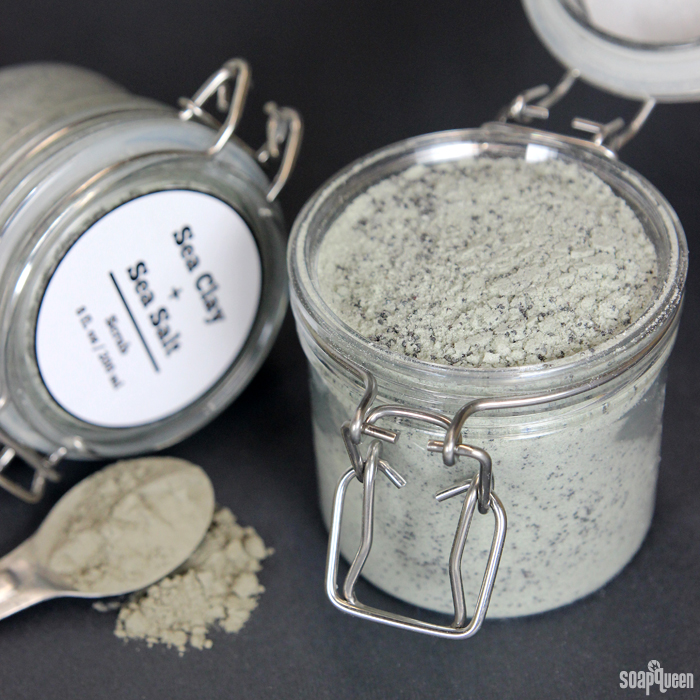 In the Sea Clay Dry Salt Scrub, a combination of sea clay, baking soda, salts and poppy seeds make a scrubby paste when mixed with water.
In the Sea Clay Dry Salt Scrub, a combination of sea clay, baking soda, salts and poppy seeds make a scrubby paste when mixed with water.
Clay in Bath Bombs
Clays can be added to bath bombs. Just keep in mind that clays are essentially dirt. If too much clay is added to the fizzy, it can leave a residue on the skin or the tub. Clays are great for giving bath bombs color, and can also help them hold their shape. In particular, kaolin clay is a popular clay choice due to the fine texture and neutral color. Kaolin clay can add structure and sturdiness to bath bombs. This help them hold their shape when unmolded, and is a popular additive for large bath bombs.
Because clays absorb, they can lead to a dry and crumbly bath bomb, so be careful to not use too much. This is especially true if you live in a very dry climate. A good place to start is about 1 tablespoon of kaolin clay per cup of bath bomb mixture. Add the clay to the dry ingredients and mix thoroughly prior to adding liquid ingredients to make the mixing process easier.
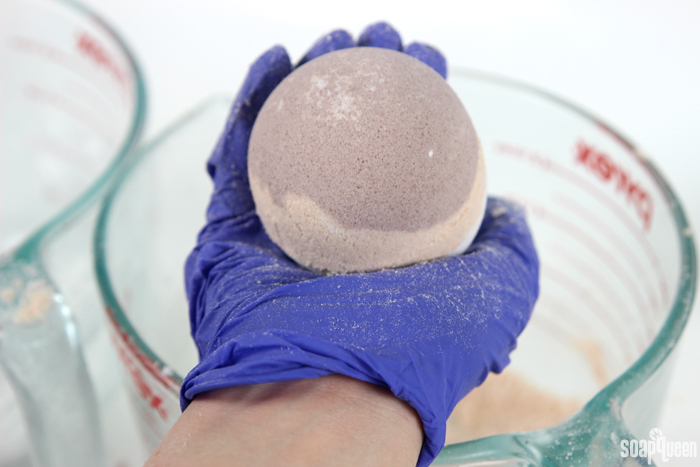 Pink Brazilian clay and purple Brazilian clay give the Lavender & Clay Mondo Bath Fizzy stripes of color.
Pink Brazilian clay and purple Brazilian clay give the Lavender & Clay Mondo Bath Fizzy stripes of color.
Clay in Face Masks and Other Products
Because clay is so good at absorbing oil, it’s commonly used in products formulated for oily skin. A popular clay beauty product is clay face masks. The masks can be “dry,” meaning water is added to the powder to make a paste and applied to the skin. Clays can also be mixed with oil for a more hydrating experience, or emulsified for a lotion-like texture. If you’re designing a clay mask, find out which one is best suited for your skin here. For some clay mask recipe ideas, check out the Soap Queen TV video below.
What’s your favorite way to incorporate clay into your handmade beauty projects?
